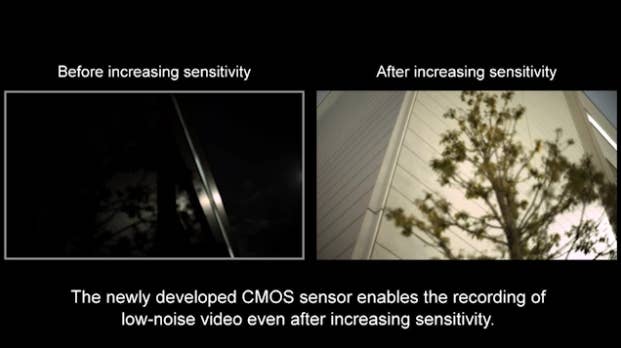To get a well-defined picture of stars, a photographer usually has to do one of two things: take a long exposure of a second or more, or crank up the camera's sensitivity to a level that adds noise and distortion to the image. Today, Canon is teasing a full-frame (35mm-film-size) camera sensor that can not just capture photos in extreme low light, but video too. The above clip was recorded in real time with nothing but starlight.
This next image shows two video captures of the same scene, one without the new sensor's improved sensitivity and one with. The only illumination is moonlight:

Canon's DSLR cameras are known for their low-light performance — it's one of the reasons so many filmmakers use the 5D series in addition to, and sometimes in lieu of, pro-grade video cameras. But this is something different and more specialized: "The newly developed CMOS sensor features pixels measuring 19 microns square in size, which is more than 7.5 times the surface area of the pixels on the CMOS sensor incorporated in Canon's top-of-the-line EOS-1D X and other digital SLR cameras," says Canon, which means the total resolution of its images is likely much lower than a regular full-frame DSLR. Canon says that the first generation of this tech will likely be used in non-consumer applications, such as surveillance and "astronomical and natural observation."
It's worth watching the whole demo video, though, because the sensor's effect is profound. It basically pulls off night vision without screwing with image color. It's hyperreal:

